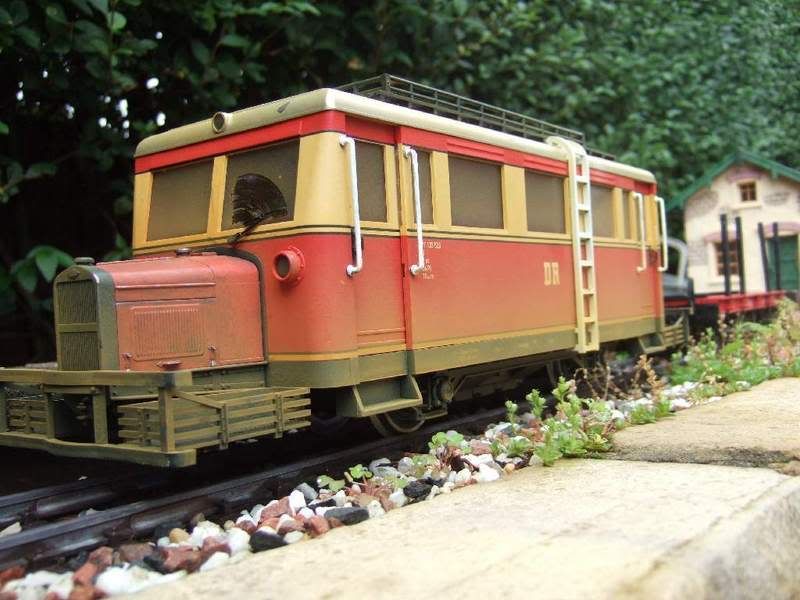One of the more madcap ideas I had for this small project was to illuminate it in some way (so as to add some extra visual appeal to a potential evening run of the main line); a task which, it would be fair to say, one might readily file away under 'A bit hard for a numpty to attempt given his exploits with wiring the very simple track layout'. No offence meant, I'm sure.
But, dear reader, by now you will appreciate a recurring theme from trawling through earlier episodes in this epic tale: that I am hopelessly dependant on strange coincidental happenings, and not a little leaping of the imagination to aid me in overcoming obstacles to my quest. So it was to prove yet again, when my dear wife, the MD, announced that with the advent of our new garden shed, we would have the benefit of 'natural light' for its internal lighting - by dint of a battery-powered electric light panel. The unit was totally self-sufficient, being kept charged by a modest solar panel. The idea was that the solar panel would be afixed in some way to the shed roof, while the cable passed through the wall to the lighting unit on the inside. All very good - in theory.
The practice was a little disappointing to say the least. The lighting unit, consisting as it did of 5 5mm diameter white Light Emitting Diodes, was shown to be utterly inadequate for lighting anything more cavernous than a cardboard box. So, another criminal waste of 10 English Pounds was consigned to the 'probably come in useful for something one day' store...
But then, guess what? come in useful it did! At a loose end one evening, I dismantled the lighting unit to see how it all fitted together. It proved surprisingly easy to completely detatch the LED board from the rest of the innards - in fact, I managed it entirely by accident. Applying a single 'superbright' white LED from my electrical spares box to the two wires and flicking the switch, I was instantly rewarded with a very bright light. At that moment, I knew how I was going to provide the lighting for the dock-side. For a bonus, I even managed to successfully remove 4 of the 5 LEDs from the now defunct board (the other died on the operating table from an excess of heat courtesy of my 60-watt soldering iron)
The intention is now to mount the box on the garden wall, somewhere unobtrusive, then extend the two wires via a narrow cable the whole length of the factory building. At various strategic points along its length, I shall tap in to the wiring and connect an LED. At this time I hope to use the small white ones for internal factory lighting (shining from the factory windows), with some orange ones 'outside' to give the impression of 'street' lights on the dock-side itself. That's the plan anyway; we shall see how it goes.
For the moment though, here's a couple of shots of the engine-shed:. This first one is a bit blurred, due to some slight movement of the camera as the picture was taken:


So all in all, the shed light works - provided you have the correct size of shed!
















